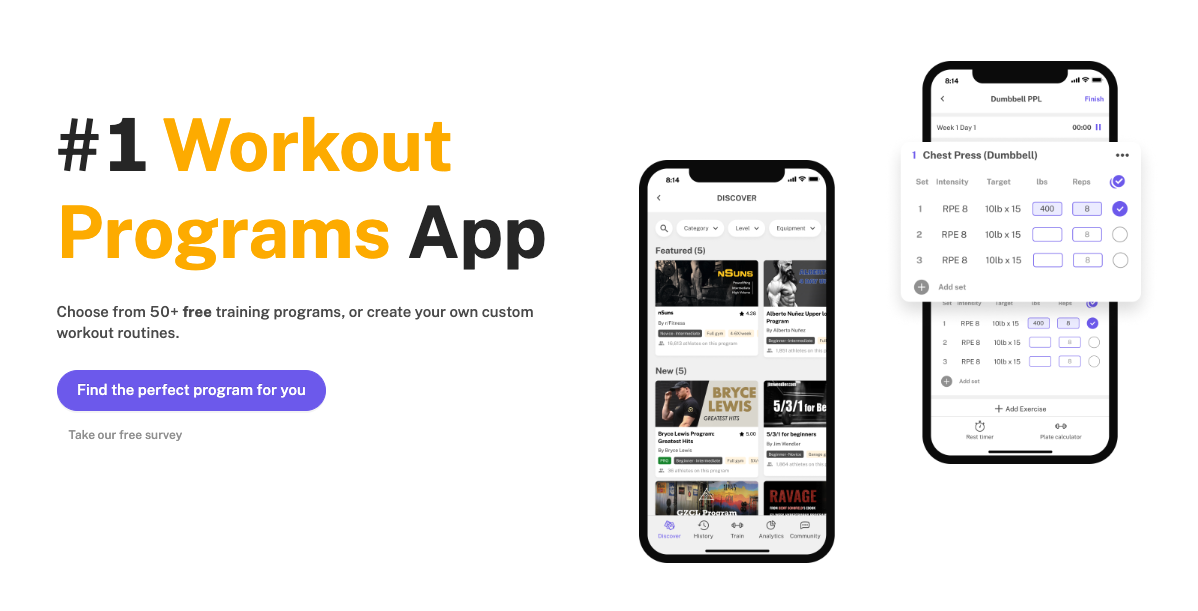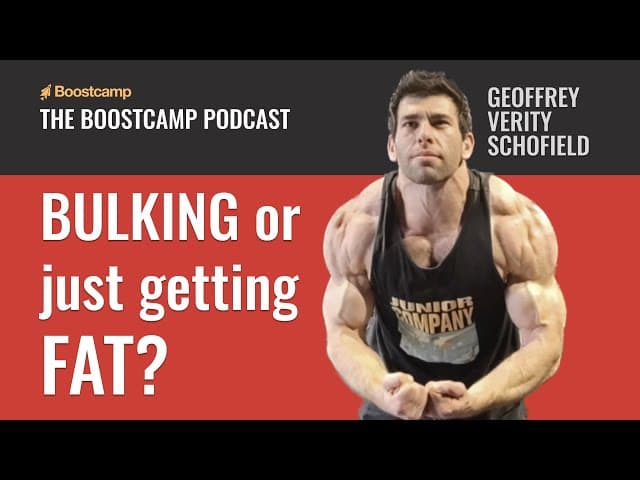Are You Bulking, or Just Fat?
Written by The Boostcamp Editors
The difference between a legitimate bulk and just being out of shape
A solid bulk is something that a lot of people will do to put on strength and muscle mass, and typically it is effective. But at what point is your “bulk” just you getting fat? Natural lifters have a much harder time putting on muscle mass than they do body fat as opposed to enhanced lifters, so if you bulk for 6 months and put on a couple of pounds, how much of that is just actual muscle? This is a topic that came up during Michael Liu’s interview with Geoffry Verity Schofield on the Boostcamp Podcast, and it was quite the interesting discussion.
Let’s take a look at what these two had to say when figuring out if your bulk was just fat gain, or you are actually building some muscle mass and strength.
What is a Bulk?

By standard gym bro definition, a bulk is when you eat more and lift heavier, with the intent to put on some serious size and strength. Typically, a bulk is divided into two different categories, being clean and dirty.
A clean bulk is when you increase your caloric intake with all clean foods, with the exception of a cheat meal here and there. That being said, protein sources during a clean bulk are typically whole food, lean meats like beef, chicken, and fish. The carbohydrate sources are typically rice or some other complex carbohydrate, and fats are healthy sources like nuts or avocado (just an example). The goal of a clean bulk is to put on muscle mass, with minimal fat gain.
A dirty bulk is when caloric intake is increased, but with little to no dietary restrictions whatsoever. That being said, you can take a look at someone like Sam Sulek, who eats whatever he wants as long as he is in a caloric surplus. Now, the rumor is that he is enhanced, so you will see him putting on a decent amount of muscle mass rather than fat. Typically, with a dirty bulk you will gain some serious body fat.
Unfortunately, even with a clean bulk, you will more than likely put on some body fat, as that is what happens when caloric intake is increased. As much as you want to, you cannot put on strictly muscle mass when you eat more than your maintenance calories, unless maybe if you were an enhanced lifter with the absolute top tier genetics on the planet.
How Much Muscle Can You Put on Each Year?
Another thing to consider is that you most likely will not be putting on massive amounts of muscle each year as a natural lifter. Sure, when you are first starting out you may put on a good bit in that first year of training, but most people only put on around 2kgs of muscle each year once they have become a more advanced lifter. Even though a DEXA scan might say you put on more muscle than that, you have to remember that there is a margin of error with those machines and the amount of muscle you put on with a bulk may differ.
Geoff stated in his interview that he has had years where he put on 5-6 pounds of muscle as a natural lifter. What was the cost of that? About thirty pounds of fat gain each time, which is something not many people want to hear. He states that although you may not want to put on massive amounts of fat when you are bulking, this is something you have to realize, is that you cannot necessarily put on massive amounts of muscle each year naturally, without putting on a bit of unwanted body fat.
Another point that Geoff made is how much of a role anabolic steroids and an athlete’s genetics can play in your bulking phase. He uses the example of former Mr. Olympia competitor Kevin Levrone, who would bulk while he was going into a show prep. Kevin would put on weight, while decreasing body fat, meaning his bulk was basically all muscle mass.
Unfortunately for natural lifters, this is not the case, and the bottom line is that you will most likely put on some fat during your bulk, but again the question is at what point does your bulk just become you getting too fat? Yes, putting fat on during a bulking phase is largely inevitable, there comes a point when you are no longer doing yourself any good, and you are just getting fat.
How to Measure Gains From a Bulk
Geoff brings up the point of making gains during a bulk, as generally you will get stronger when you are bulked up. You have increased cushioning around the joints via water retention and just the extra mass, so you should be getting stronger on your lifts, which is great for powerlifting. However, it is hard to measure the amount of muscle mass you have under the fluff, so those strength gains are a good measurement of how effective the bulk was.
Another way to tell the amount of gains you made from a bulk, is ironically during the cut. When you have a lower body fat percentage, you see if you have more muscle mass from the last time you were a lower body fat. Also, if you keep your strength during a cut, this is a good sign that the bulk was effective, and you were not just getting fat. Geoff states that your strength on the bench press is a good measure of your gains made during a bulk, as you will lose strength easier the other compound lifts such as the squat and deadlifts.
Geoff also mentions that during a cut, you have to cut fairly slowly if you are natural. Making gains from a bulk is great, so you do not want to lose them during a cut. He stated that he did a six month cut to maintain the muscle mass he gained from a bulk.
Don’t Just Max Out During a Bulk
Geoff also brings up the importance of not just hitting one rep maxes during a bulk. Sure, you are going to be getting stronger if you are properly bulking, so hitting one rep maxes is going to be fun, but that is not the way to put on muscle mass.
Geoff mentions lifters that may be smaller than him in terms of muscle mass, but lift similar weight to him. He attributes this to the amount of sets that he has taken to failure, and the high amounts of volume he has done. This is why he stresses the importance of training to failure, improving the form, and really devoting yourself to the bodybuilding side of things. He states that if someone is strictly following a powerlifting training program, then they are not necessarily getting the diversification that they could, and making the gains that they could.
How to Not Get Fat During a Bulk

The last thing Geoff talks about is how to avoid getting too fat during a bulk, and that is done through caloric restrictions and weight management goals. He states that maybe rather than trying to get as big as possible, instead aim to gain a set amount of pounds each month.
Training Programs for a Bulk
In order to effectively bulk up, finding a good workout program to help guide you is key. Keep in mind that good programs will help with your fitness journey, you would want to find a program that caters to your needs and guides you in the right direction, making sure that you are making the most gains. If you are looking to stay on track and continue with linear progression, then finding a good workout program is the key. Where do you look for a good workout program? Check out the Boostcamp App for some great programs.
Boostcamp is home to over 50 FREE workout programs that consist of strength, hypertrophy, or functional fitness, or both, from the push pull legs program all the way to upper lower, there are so many programs to choose from that can help fit your needs. However, with Boostcamp, you don’t have to just follow a pre-written program (although each program is written by a professional), you also can create your own program as well, and track your progress to make sure you are on the right track. That being said, when you are looking to incorporate some serious training to further your progress on the bulk, then check out Boostcamp.
Wrap Up
Overall, a bulk is something that can be very beneficial for your size and strength gains. It is pretty much inevitable to bulk without putting some fat mass on, but there comes a point in time where you are just getting fat. There are measures that you can take to prevent an overabundance of fat gain while putting on good amounts of strength, such as higher volume workouts and caloric restrictions. When it comes to measuring your gains from a bulk, most of that is done during the cut.
Are you bulking any time soon? If you are looking for a good quality program to add size and strength, check out the Boostcamp App. There are over 50 FREE programs for you to choose from.
Be sure to follow Boostcamp on Instagram and subscribe on YouTube!


